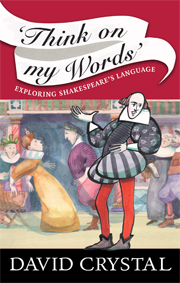Book contents
- Frontmatter
- Contents
- List of figures and tables
- Preface
- Abbreviations
- 1 ‘You speak a language that I understand not’: myths and realities
- 2 ‘Now, sir, what is your text?’ Knowing the sources
- 3 ‘In print I found it’: Shakespearean graphology
- 4 ‘Know my stops’: Shakespearean punctuation
- 5 ‘Speak the speech’: Shakespearean phonology
- 6 ‘Trippingly upon the tongue’: Shakespearean pronunciation
- 7 ‘Think on my words’: Shakespearean vocabulary
- 8 ‘Talk of a noun and a verb’: Shakespearean grammar
- 9 ‘Hear sweet discourse’: Shakespearean conversation
- Epilogue – ‘Your daring tongue’: Shakespearean creativity
- Appendix: An A-to-Z of Shakespeare's false friends
- Notes
- References and further reading
- Index
6 - ‘Trippingly upon the tongue’: Shakespearean pronunciation
Published online by Cambridge University Press: 14 May 2010
- Frontmatter
- Contents
- List of figures and tables
- Preface
- Abbreviations
- 1 ‘You speak a language that I understand not’: myths and realities
- 2 ‘Now, sir, what is your text?’ Knowing the sources
- 3 ‘In print I found it’: Shakespearean graphology
- 4 ‘Know my stops’: Shakespearean punctuation
- 5 ‘Speak the speech’: Shakespearean phonology
- 6 ‘Trippingly upon the tongue’: Shakespearean pronunciation
- 7 ‘Think on my words’: Shakespearean vocabulary
- 8 ‘Talk of a noun and a verb’: Shakespearean grammar
- 9 ‘Hear sweet discourse’: Shakespearean conversation
- Epilogue – ‘Your daring tongue’: Shakespearean creativity
- Appendix: An A-to-Z of Shakespeare's false friends
- Notes
- References and further reading
- Index
Summary
The subject of phonology mainly deals with the segmental side of pronunciation: the vowels, the consonants, and the way vowels and consonants combine to make syllables and, ultimately, words. It is very much a rule-governed system. We cannot string sounds randomly together to make syllables. In English, certain sounds never appear at the beginnings of words: there are none beginning with the sound [ŋ]; that sound is heard in the middle and end only (as in singing). A h sound (as in happy) is never heard at the end of a word. A sh sound (as in ship) is heard very rarely before a p, t, or k – just in a few recent loan-words, such as spiel. And so on.
Differences in regional or social accent are mainly a matter of vowels and consonants (though tone of voice can be important too). The prestige British accent known as ‘received pronunciation’ (RP) pronounces h at the beginning of words, as in hurt, and avoids it in such words as arm. Cockney speakers do the reverse; I 'urt my harm. Most English accents around the world pronounce words like car and heart with an audible r; RP is one of the few accents which does not. In RP, words like bath are pronounced with a ‘long a’ (‘bahth’); up north in England it is a ‘short a’. Accent variations mainly affect the vowels of a language. They are easy to hear, but difficult to write down without mastering a phonetic transcription.
- Type
- Chapter
- Information
- Think On My WordsExploring Shakespeare's Language, pp. 125 - 145Publisher: Cambridge University PressPrint publication year: 2008



